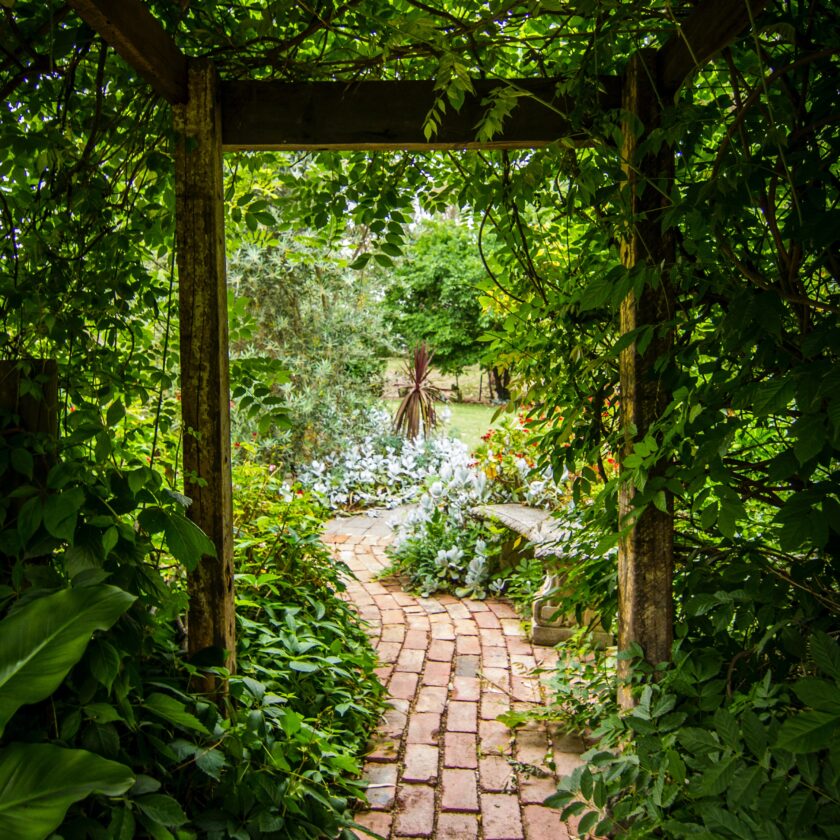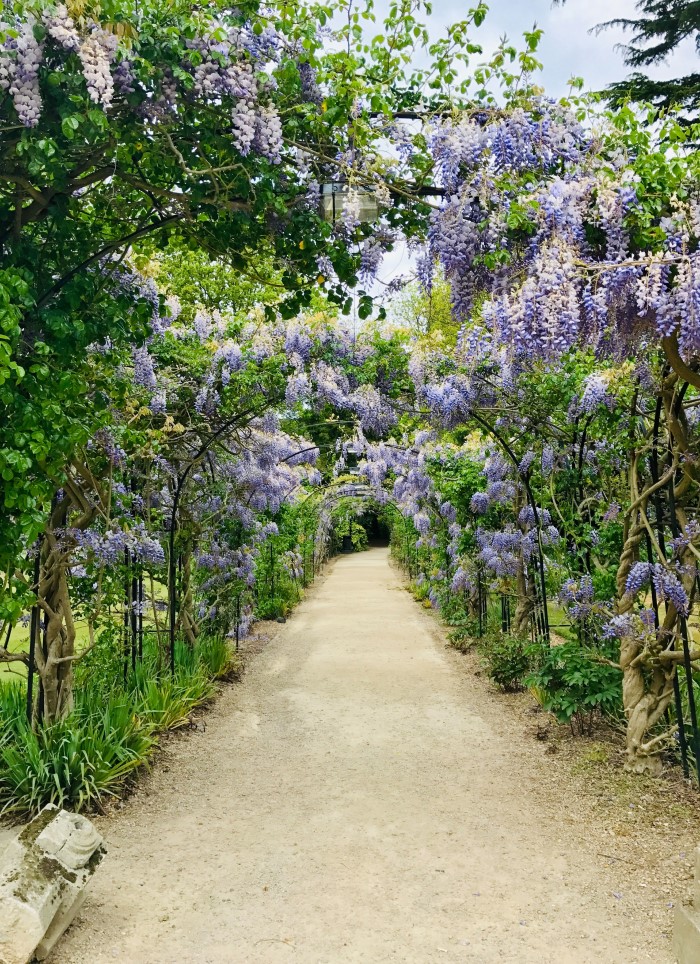Spring Gardening: Arbors and Trellises
By Josh Reilly
“Arbors and Trellises” sounds like the title of a 70s soft-rock album, brimming with meaning. A reference to lofty, light weight, airy structures, often geometric and angular in form, but built to provide living space for winding, cascading plants, all curves and knots, billows and waves, tendrils and holdfasts. Things that prefer to live up in the breeze. Arbors and trellises are not unlike a rhythm section for the music in your garden. Regular and symmetrical. Reliable and solid. Composed of elements repeated and themes restated, a reassuringly regular scaffold for the mad flights of your soloists.
Garden styles from all over the world include these structures. Even the most austere Japanese Zen garden may have place for a Wisteria floribunda on a trellis over a gate or an entrance way. There would be no wine or beer without trellises for grapes and hops. No runner beans or ornamental sweet peas without them or related structures. And when the ground level in your garden is all planted out, where else can you go, but up? A few cautionary words: buy or build a sturdy arbor or trellis and anchor it firmly to the ground. Mature vines are heavy and much of the weight is distributed upward. A windstorm like the one we just had will send the whole thing sprawling if it is not properly secured.
Rambling roses, trumpet vines, jasmine, Wisteria, potato vines, Clematis, and Hardy Kiwi are among the many choices for the SLV area. First, however, a caveat or two. Most of these plants require a moderate amount of water and are thus, unsuited to a true xeriscape. Also, several are considered invasive. Two, I would exclude altogether: English (or Algerian) Ivy (Hedera sp.) and Vinca. Riparian corridors in the SLV are choked, in places, with large stands of both. Ivy looks nice on the brick walls of east coast universities. Here in the SLV, what is the point? Vinca, at least, is easier to remove, does not engulf entire trees and does have a pretty periwinkle flower in Spring. Still, there are multiple alternatives. Another vine to avoid, bears the cringe-inducing name “Confederate Jasmine.” Do I even have to explain why?
Still others, including some species of Clematis, Wisteria and Passiflora, are also considered at least somewhat invasive. This varies with species and cultivar, so check with growers, nurseries and the local California Native Plant Society, before planting. Leaving aside invasiveness, the following vines are well suited to Valley gardens. Climbing, rambling roses are a good choice, if you don’t mind some annual pruning. I have a well-established Lady Banks Rose and have recently started a rambling Rosa “Veilchenblau” blue rose. It’s only a few years old. I will keep you informed. My California wild grape grows like an unholy mutant. The squirrels and jays eat all the fruit before I get anywhere near it. I am trying to decide if the lovely red-brown Fall foliage is worth the mandatory 5 or 6 Spring and Summer prunings.
I think there is a place in almost every garden for Wisteria. There is a native variety (“Amethyst Falls”, available through Annie’s Annuals) which may be less invasive. There are multiple Clematis species and cultivars that will happily climb an arbor or trellis, although it is said that they prefer shade on their feet. Chaparral and White Clematis are native choices. Japanese honeysuckle (Lonicera japonica) is somewhat invasive and grows rapidly, especially in warmer climate zones. California honeysuckle (Lonicera hispidula) is a drought-tolerant native substitute, but like many natives, it’s rough and rangy. Great for those (like myself) who prefer the wild garden look. White potato vine does quite well here. The purple variety seems a bit more susceptible to frost. Don’t forget the long list of annual climbers you might choose from, including hyacinth bean, ornamental gourds, and Ipomea sp.

Josh Reilly, aka Uncle Skip, writes about seasonal gardening from his home in Ben Lomond.
Featured photo: Wisteria pathway in Spring. Photo by Carlita Benazito
The San Lorenzo Valley Post is your essential guide to life in the Santa Cruz Mountains. We're dedicated to delivering the latest news, events, and stories that matter to our community. From local government to schools, from environmental issues to the arts, we're committed to providing comprehensive and unbiased coverage. We believe in the power of community journalism and strive to be a platform for diverse voices.





